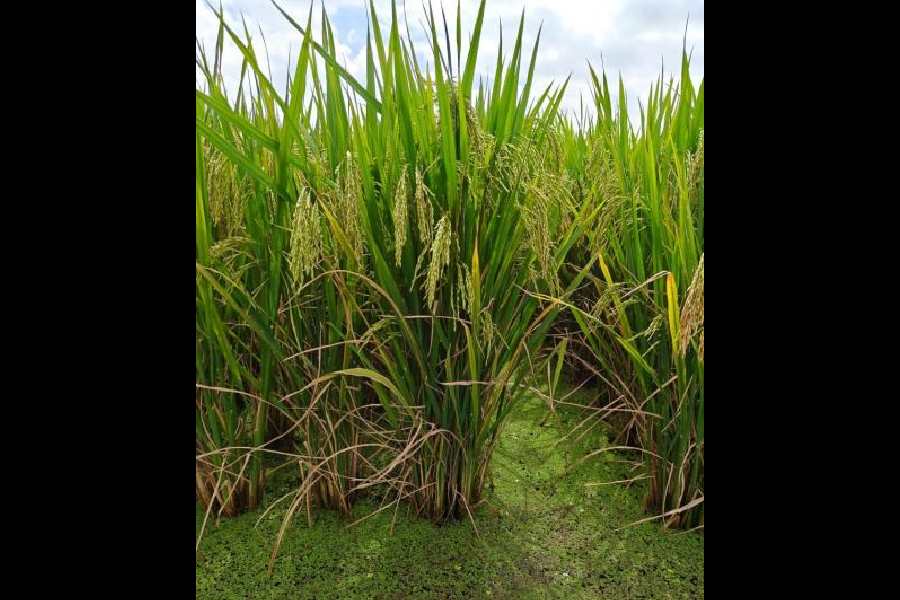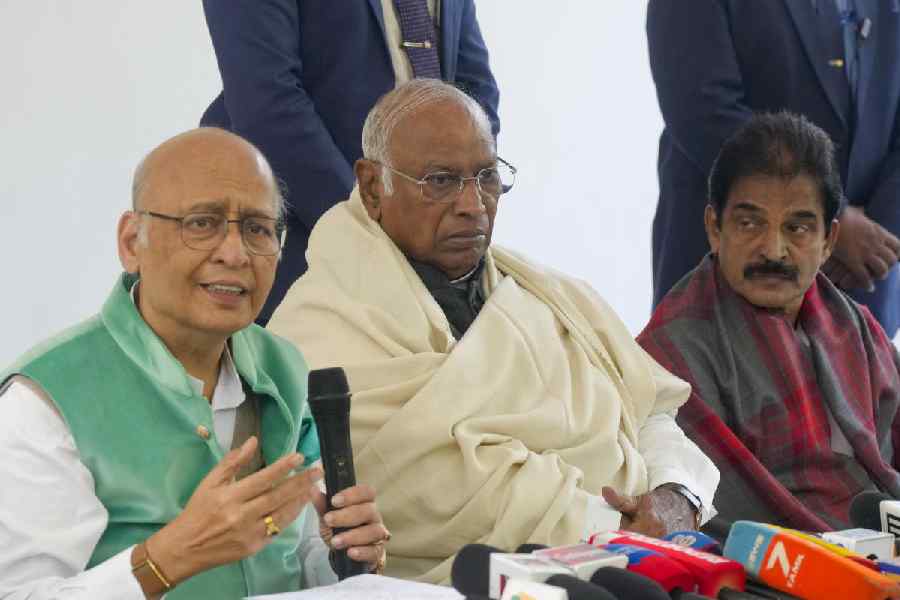Assertions by the agriculture ministry about the superiority of two homegrown gene-edited rice varieties have drawn scrutiny from a coalition opposed to genetic engineering in food, which says the government’s own data do not support them.
The Coalition for a GM-Free India has questioned the ministry’s assessment of two rice varieties, DRR Rice 100 (Kamla) and Pusa DST Rice 1, alleging that the Indian Council of Agricultural Research (ICAR) cherry-picked favourable data from 2023 and 2024 field trials.
The ministry in May had said the varieties developed by ICAR scientists could “bring about revolutionary changes” through higher production, greater climate adaptability and salt tolerance, and improved water conservation.
Unlike genetic engineering, which adds new genes into a plant, gene-editing fine-tunes or turns off a plant’s own genes to confer specific desirable traits.
The ICAR said Kamla had a mean yield increase of about 19 per cent over its parent variety Samba Mahsuri and matures up to 20 days earlier, implying savings in water and fertiliser use.
Pusa DST Rice 1, it said, can boost yields 9.7 to 30.4 per cent in saline and alkaline soils, with the potential for up to 20 per cent higher production. But the coalition has cited ICAR’s own published data to argue that the assertions about superiority rely on selective use of trial results.
"The ministry’s claims about superiority have put a question mark on scientific integrity and could mislead farmers about the benefits of the two rice varieties,” coalition member Kavitha Kuruganti told a news conference in Delhi on Wednesday.
Email queries from this newspaper to the ICAR seeking its perspective on the coalition’s allegations have remained unanswered.
But ICAR scientists involved in the development and evaluation of the varieties said the coalition’s claims appeared to stem from a misunderstanding of the evaluation process and selective use of published results.
The inclusion and exclusion of any trial sites follow long-established guidelines determined by independent trial monitoring teams and are standard practice in the evaluation of all crops, the scientist said.
"Both gene-edited varieties represent technological advances and have undergone rigorous scientific evaluation — their field demonstrations validate the ICAR reports,” a second scientist said. Both have requested anonymity as they are not authorised to speak to the media.
The two varieties are currently awaiting certain procedural approvals ahead of planned release for cultivation, the scientists said.
The coalition, citing the ICAR’s published annual reports, has claimed Kamla underperformed in 8 of 19 trial sites in 2023 and 8 of 14 sites in 2024. The mean yield increase across the 14 sites is 2.8 per cent, but a summary table shows 21 per cent based on selective sites, it claimed.
It has also questioned the assertion about early flowering, saying ICAR data show Kamla’s mean flowering time was 101 days against its parent’s 104 days, and that in some zones Kamla actually flowered later.
The ICAR scientists said those numbers represent the results from only one set of trials. “At other sites, early maturation of up to 20 days has been recorded — we’ve never claimed 20 days early maturation across the country,” one scientist said.
The coalition has similarly challenged the ICAR’s claim that Pusa DST 1 provides superior yield performance of 30.36 per cent in coastal salinity conditions, pointing out that the same report says the variety failed to register yield superiority “in any zone”.
The coalition has asked the government for an independent, transparent scientific review of the trial data and methodology.
ICAR scientists maintain that the development and evaluation of new varieties follow established procedures, and that any final judgment on their performance rests with farmers — a view they say reflects confidence in the trial process and results.
“The ultimate verdict about varieties will come from farmers themselves — not us,” a scientist said. “Farmers only adopt and recycle varieties that they find attractive. Their assessment determines whether a variety stays in the market or not.”










